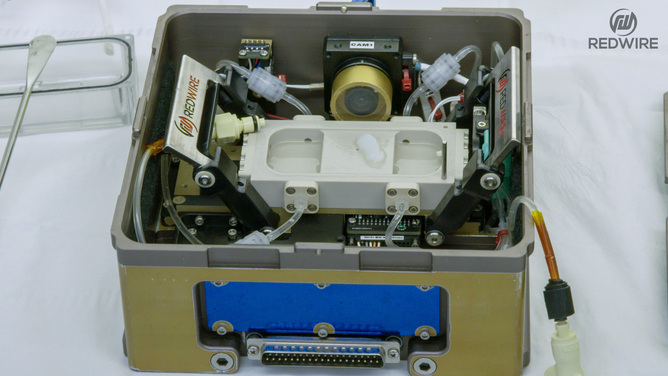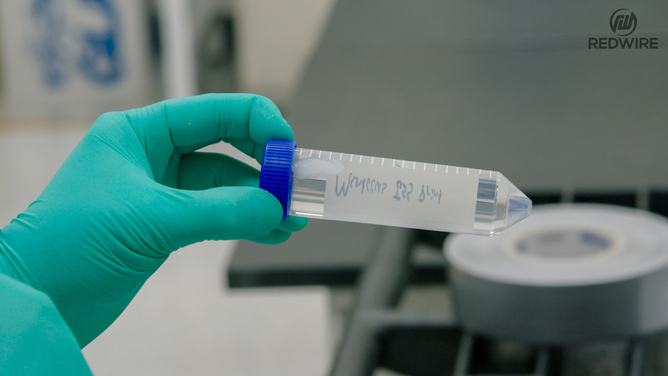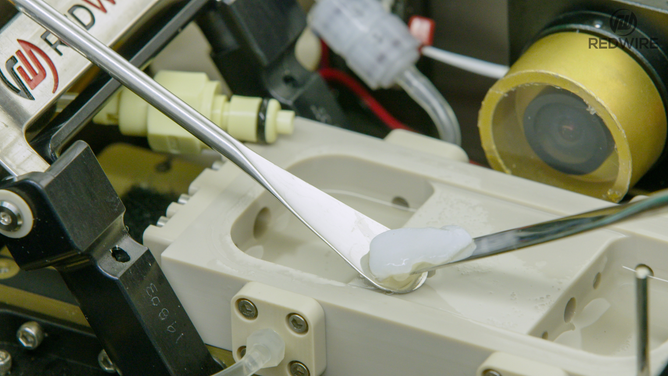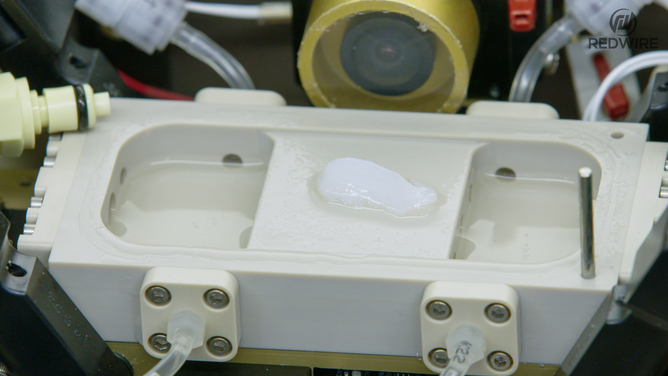First human knee meniscus successfully 3D printed on International Space Station
The printed human knee meniscus was brought back to Earth with the Crew 6 astronauts on SpaceX's Crew Dragon over the weekend.
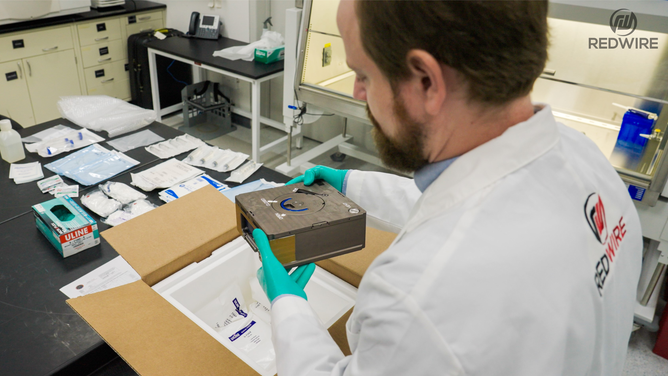
Redwire science team members opening the BFF-Meniscus-2 experiment, at the International Space Station Processing Facility. (Image credit: Redwire)
A key tissue used to fix a common injury found among athletes and U.S. military members was successfully 3D printed by astronauts on the International Space Station, according to Redwire.
In July, NASA astronauts Frank Rubio, Woody Hoburg, Stephen Bowen, and UAE astronaut Sultan Al-Neyadi used the 3D BioFabrication Facility on the space station laboratory to print a human knee meniscus. According to Redwire, after the print, the tissue was cultured for 14 days in the orbiting laboratory in Redwire’s Advanced Space Experiment Processor.
Now that the first bioprinted part is back on Earth, Redwire is calling the test a successful experiment. The 3D-printed meniscus was part of an experiment series for the Uniformed Services University of the Health Sciences Center for Biotechnology, a research center dedicated to biotechnologies to benefit soldiers.
NEW BIOTECH FACILITY ON EARTH WILL HELP DEVELOP MICROGRAVITY RESEARCH SUPPORTING HUMAN SPACEFLIGHT
The printed meniscus was brought back to Earth with the Crew 6 astronauts on Crew Dragon over the weekend. After the spacecraft splashed down in the Atlantic Ocean off the coast of Jacksonville, Florida, the astronauts were flown back to Houston. Some experiments, including the printed tissue, were brought to the Kennedy Space Center, where Redwire teams collected it.
"This is a groundbreaking milestone with significant implications for human health," said Redwire Executive Vice President John Vellinger. "Demonstrating the ability to successfully print complex tissue such as this meniscus is a major leap forward toward the development of a repeatable microgravity manufacturing process for reliable bioprinting at scale."
Redwire says it plans to launch more microgravity research in November that includes bioprinting cardiac tissue.
